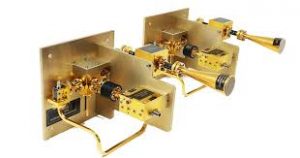Millimeter Wave Transceiver:

The Centre for Development of Telematics (C-DOT) has signed an agreement with the IIT Roorkee to develop a Millimeter Wave Transceiver aimed at improving 5G connectivity in rural areas under the Telecom Technology Development Fund (TTDF) scheme.
- Millimeter Wave Transceiver Technology is a device used to transmit and receive signals in the millimeter wave (mmWave) frequency range (30-300 GHz), enabling high-speed wireless communication for applications like 5G.
- It Uses small cells to emit high-frequency mmWaves that provide fast data rates over short distances; small cells are placed in clusters to ensure continuous coverage.
- Advantages – High data rates and bandwidth
- – Low latency
- – Less interference with other systems
- – Compact antennas for IoT compatibility
- – Increased data capacity
- Disadvantages
- – Limited range; blocked by physical objects
- – Prone to signal degradation from rain, humidity, and obstructions
- – Higher manufacturing costs and need for clustered cells




